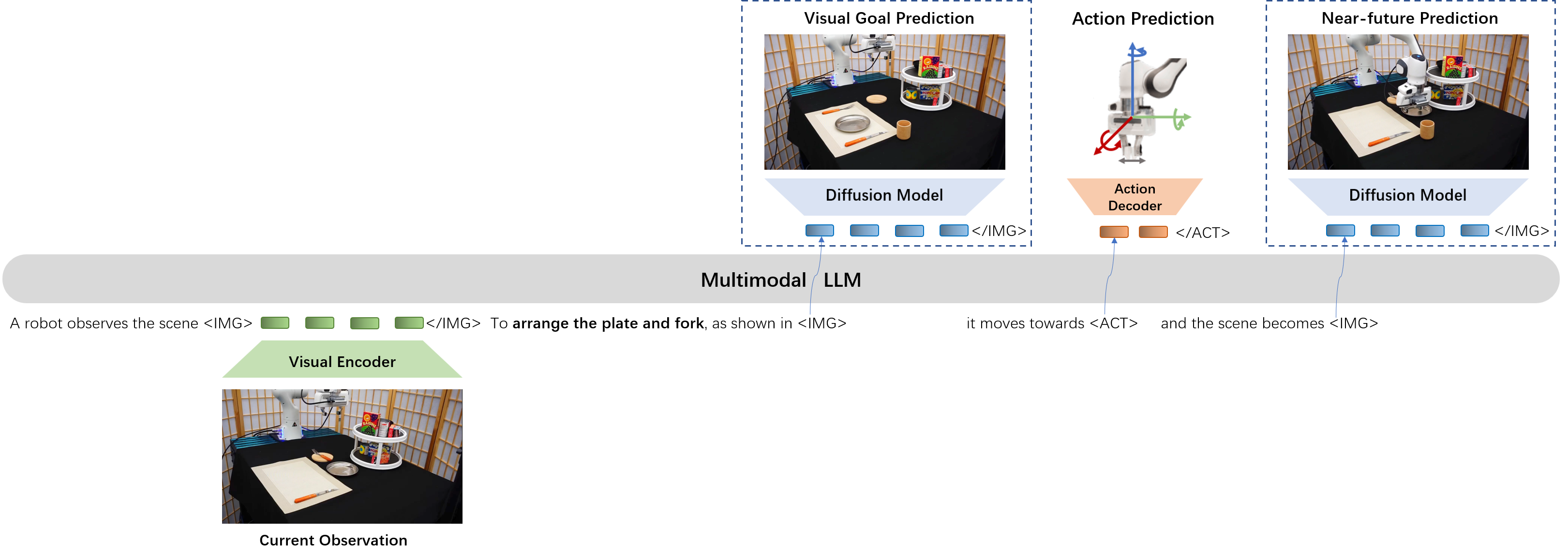
|
|
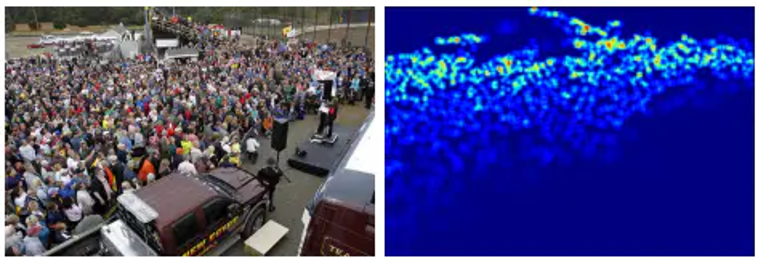
|
|

|
|
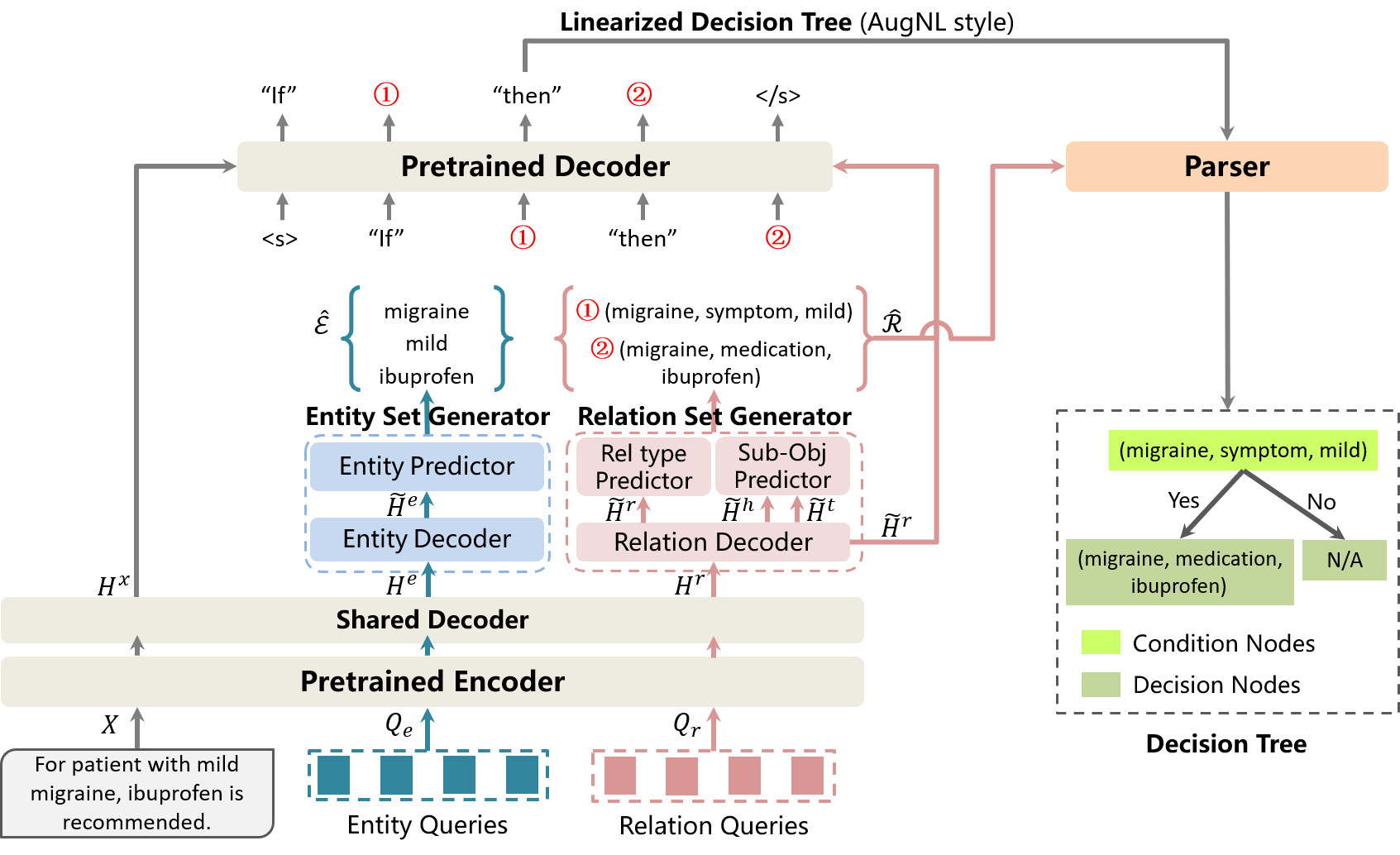
|
pdf |
abstract |
code
Medical decision rules play a key role in many clinical decision support systems (CDSS). However, these rules are conventionally constructed by medical experts, which is expensive and hard to scale up. In this study, we explore the automatic extraction of medical decision rules from text, leading to a solution to construct large-scale medical decision rules. We adopt a formulation of medical decision rules as binary trees consisting of condition/decision nodes. Such trees are referred to as medical decision trees and we introduce several generative models to extract them from text. The proposed models inherit the merit of two categories of successful natural language generation frameworks, i.e., sequence-to-sequence generation and autoregressive generation. To unleash the potential of pretrained language models, we design three styles of linearization (natural language, augmented natural language and JSON code), acting as the target sequence for our models. Our final system achieves 67% tree accuracy on a comprehensive Chinese benchmark, outperforming state-of-the-art baseline by 12%. The result demonstrates the effectiveness of generative models on explicitly modeling structural decision-making roadmaps, and shows great potential to boost the development of CDSS and explainable AI. Our code will be open-source upon acceptance. |
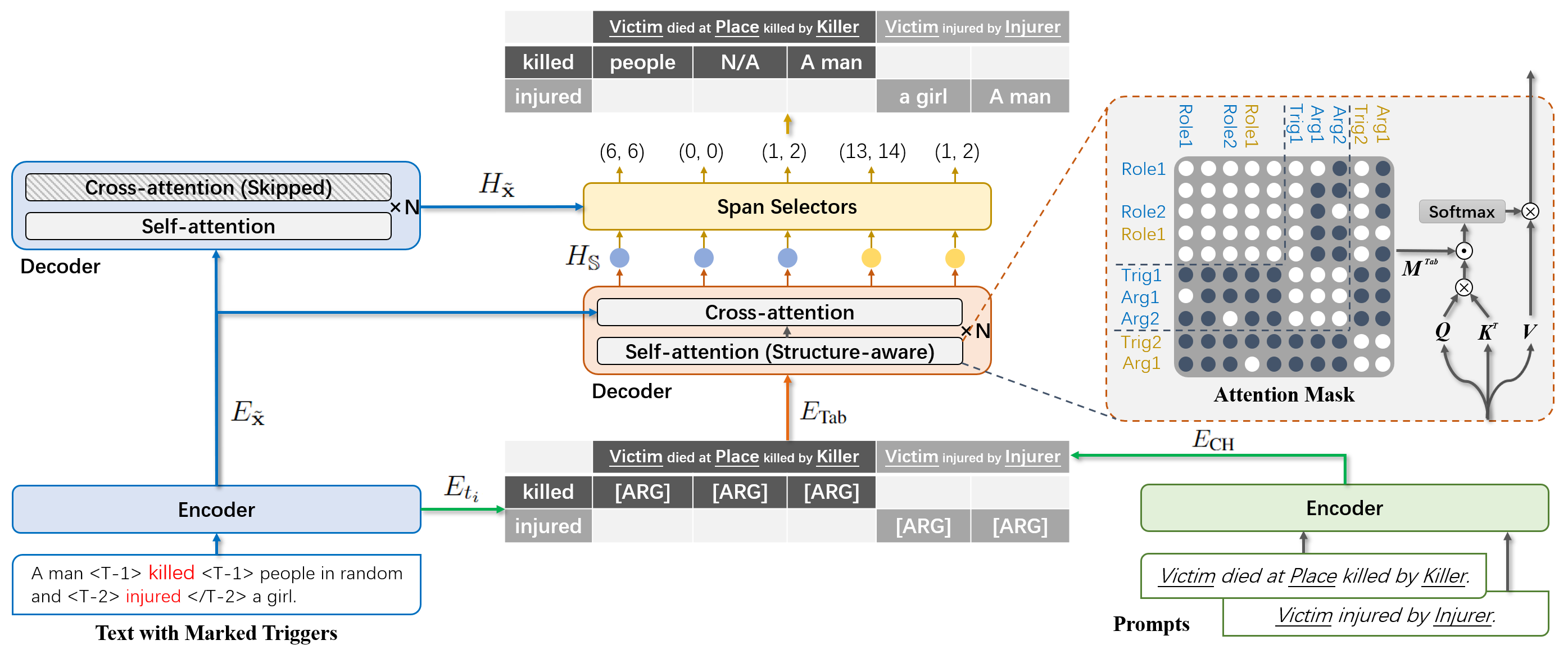
|
pdf |
abstract |
code
Event co-occurrences have been proved effective for event extraction (EE) in previous studies, but have not been considered for event argument extraction (EAE) recently. In this paper, we try to fill this gap between EE research and EAE research, by highlighting the question that “Can EAE models learn better when being aware of event co-occurrences?”. To answer this question, we reformulate EAE as a problem of table generation and extend a SOTA prompt-based EAE model into a non-autoregressive generation framework, called TabEAE, which is able to extract the arguments of multiple events in parallel. Under this framework, we experiment with 3 different training-inference schemes on 4 datasets (ACE05, RAMS, WikiEvents and MLEE) and discover that via training the model to extract all events in parallel, it can better distinguish the semantic boundary of each event and its ability to extract single event gets substantially improved. Experimental results show that our method achieves new state-of-the-art performance on the 4 datasets. Our code is avilable at https://github.com/Stardust-hyx/TabEAE. |
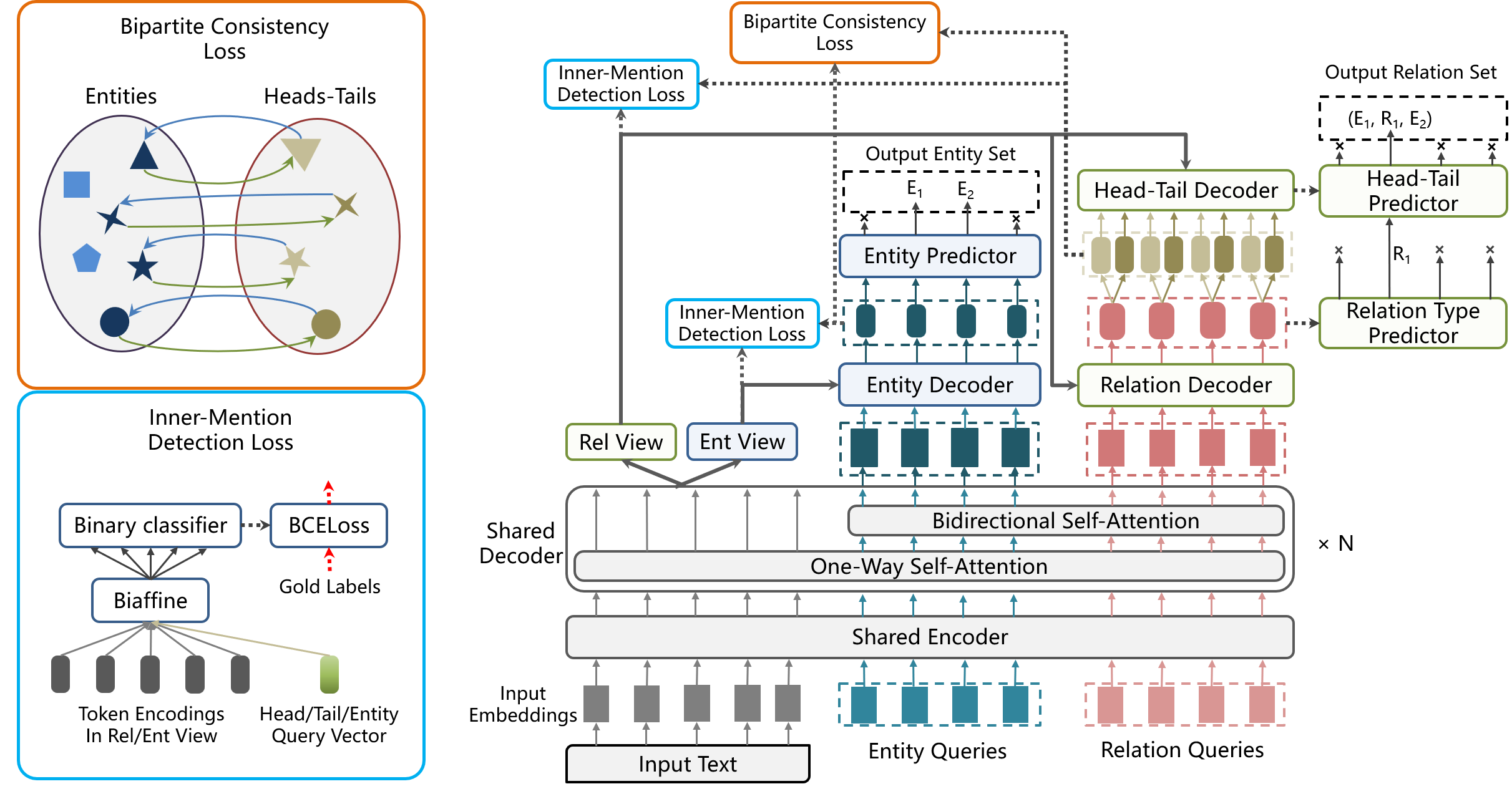
|
pdf |
abstract |
code
By modeling the interaction among instances and avoiding error propagation, Set Prediction Networks (SPNs) achieve state-of-the-art performance on the tasks of named entity recognition and relation triple extraction respectively. However, how to jointly extract entities and relation triples via SPNs remains an unexplored problem, where the main challenge is the maintenance of coherence between the predicted entity/relation sets during one-pass generation. In this work, we present Bipartite Set Prediction Network (BiSPN), a novel joint entity-relation extraction model that can efficiently generate entity set and relation set in parallel. To overcome the challenge of coherence, BiSPN is equipped with a novel bipartite consistency loss as well as an entity-relation linking loss during training. Experiments on three biomedical/clinical datasets and a general-domain dataset show that BiSPN achieves new state of the art in knowledge-intensive scene and performs competitively in general-domain, while being more efficient than two-stage joint extraction methods. |
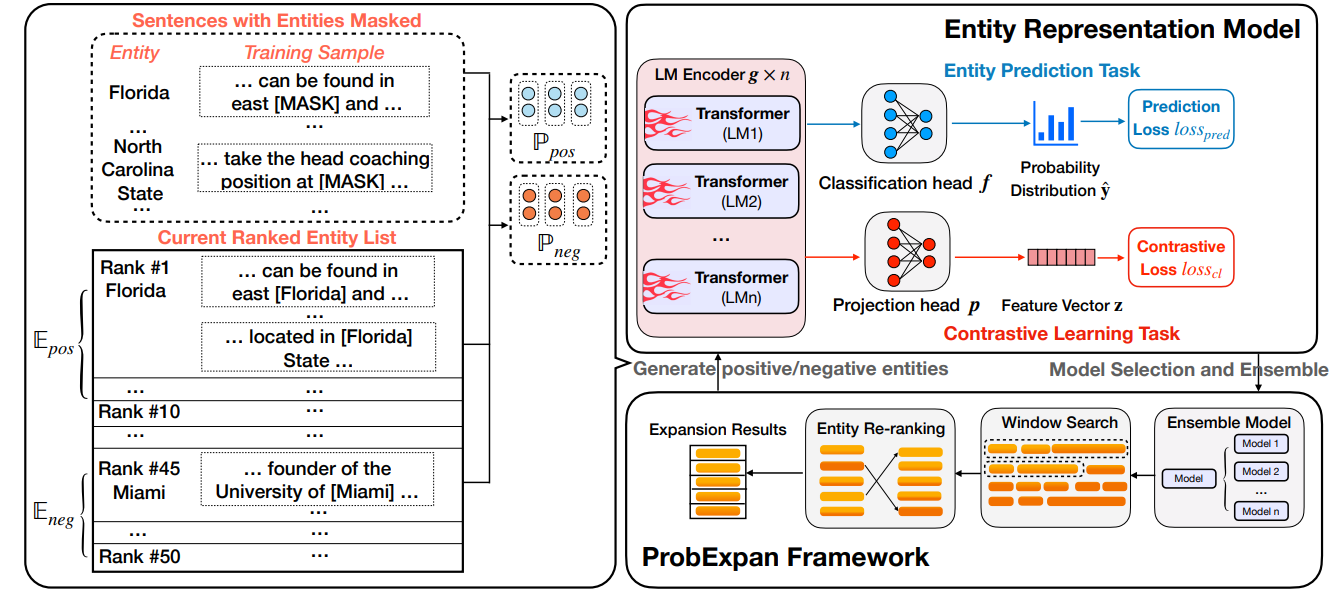
|
pdf |
abstract |
code
Entity Set Expansion (ESE) is a promising task which aims to expand entities of the target semantic class described by a small seed entity set. Various NLP and IR applications will benefit from ESE due to its ability to discover knowledge. Although previous ESE methods have achieved great progress, most of them still lack the ability to handle hard negative entities (i.e., entities that are difficult to distinguish from the target entities), since two entities may or may not belong to the same semantic class based on different granularity levels we analyze on. To address this challenge, we devise an entity-level masked language model with contrastive learning to refine the representation of entities. In addition, we propose the ProbExpan, a novel probabilistic ESE framework utilizing the entity representation obtained by the aforementioned language model to expand entities. Extensive experiments and detailed analyses on three datasets show that our method outperforms previous state-of-the-art methods. |
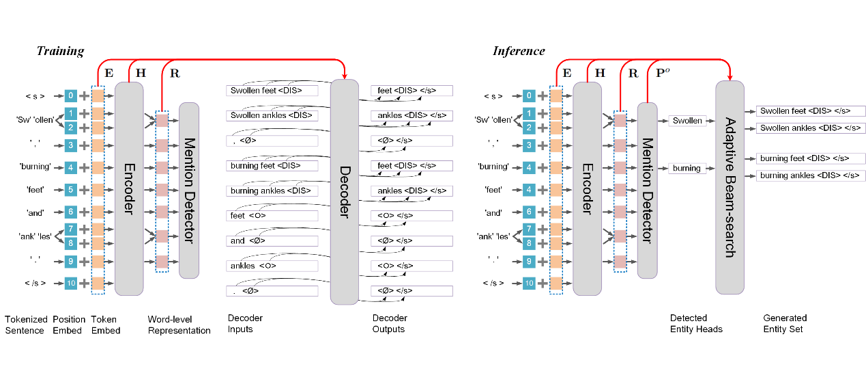
|
pdf |
abstract |
code
Recently, joint recognition of flat, nested and discontinuous entities has received increasing attention. Motivated by the observation that the target output of NER is essentially a set of sequences, we propose a novel entity set generation framework for general NER scenes in this paper. Different from sequence-to-sequence NER methods, our method does not force the entities to be generated in a predefined order and can get rid of the problem of error propagation and inefficient decoding. Distinguished from the set-prediction NER framework, our method treats each entity as a sequence and is capable of recognizing discontinuous mentions. Given an input sentence, the model first encodes the sentence in word-level and detects potential entity mentions based on the encoder’s output, then reconstructs entity mentions from the detected entity heads in parallel. To let the encoder of our model capture better right-to-left semantic structure, we also propose an auxiliary Inverse Generation Training task. Extensive experiments show that our model (w/o. Inverse Generation Training) outperforms state-of-the-art generative NER models by a large margin on two discontinuous NER datasets, two nested NER datasets and one flat NER dataset. Besides, the auxiliary Inverse Generation Training task is found to further improve the model’s performance on the five datasets. |
|
|
|
|
|
|
Website template from here |
